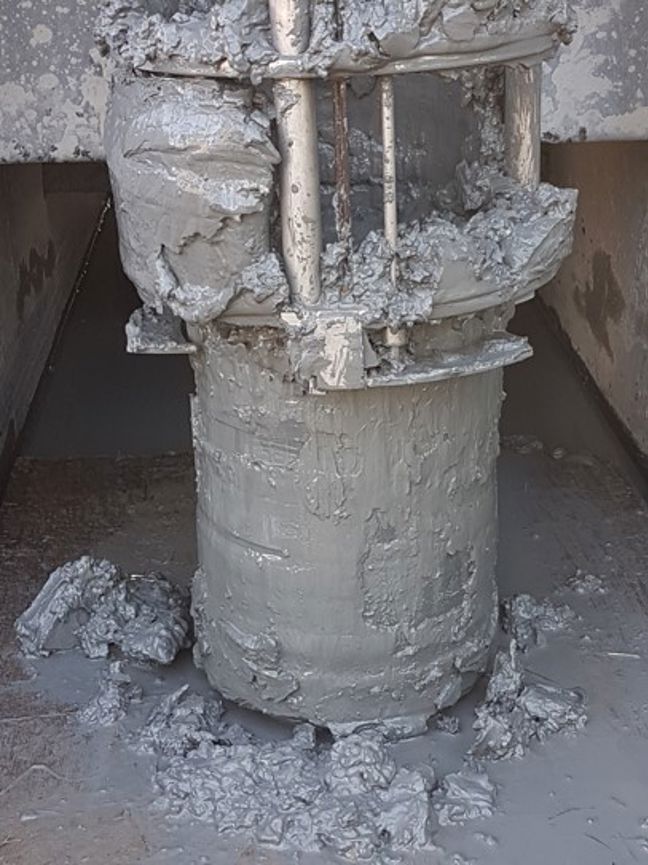InterCity Venjar - Langset
Bane Nor, the state-owned company responsible for the Norwegian national railway infrastructure, is upgrading many InterCity lines with extension to double tracks. NGI assists with geotechnical design on the section Venjar - Eidsvoll.

The construction of the new Wergeland tunnel next to the existing Eidsvoll tunnel. ( Bane NOR)
Dr. Ing. A. Aas-Jakobsen AS (AAJ) was commissioned to make a detailed and zoning plan for the Venjar-Langset parcel, and later a construction plan and construction follow-up in the construction phase. NGI has been responsible for geotechnical engineering aspects on parts of the section (Venjar -Eidsvoll) and the environmental engineering on the entire section. The project has been going on for several years.
Bridge, culvert and slope stability
The ground conditions along the section mainly consist of marine deposits, primarily quite silty firm clay with interlaced layers of silt and fine sand. The terrain is ravined with high, steep natural slopes with height differences of several tens of meters.
In its time, NGI carried out the bulk of the ground investigations on the Gardermoen line on this section when it was built in the 1990s, and NGI was also involved in the geotechnical design for large parts of the section. This was one of the first projects where cone penetration testing with measurement of pore pressure (CPTU) was used to a large extent as the main basis for determining soil parameters, mainly undrained shear strength.
The results from the CPTU soundings were correlated with laboratory tests on high-quality block samples that were taken up where the soil mass tunnel, Eidsvolltunnelen, was to be built. In this new development 30 years later, NGI has contributed with further block sampling to expand the correlation basis for old and new CPTU soundings, which are now really established as the main tool for determining undrained shear strength in clay, in particular.

Block sample of clay. The diameter is large, about 25 cm, which contributes to the clay in the middle of the sample being far more undisturbed (intact as down in the ground) compared to standard piston samplers with diameters from 5.4 to 9.5 cm.
Along the line, four new bridges will be established, which will mainly have a direct foundation on clay. The design resulted in a base of 8 x 10 x 1.2 m large foundations in the permanent clay to reduce costs and minimize the impact on existing bridges which have foundations of concrete friction piles. In some cases, the new bridges are also founded on short steel pipe piles or a variant with combined support on short concrete piles and foundation slabs.
An excavation for a culvert must be carried out and extensive assessment and securing of natural slopes in the locally heavily ravined landscape must be made. The existing railway route was built with different requirements and a different practice with regards to stability of natural slopes. This posed a significant challenge for the present design. Locally, this led to a need for extensive load relief, by flattening of slopes or large backfills. At Eidsvoll church, it was not desirable to make this type of intervention in the slope, and therefore the church is secured with a combination of ground reinforcement with jet piles and a small support fill at the top.
Excavated soil masses along the route are mainly used for backfilling of ravines locally in the area. NGI has contributed with requirements for stability and construction of over 15-20 m high embankments with silt and clay. A new agricultural area is being established at the top, so that the project as a whole has led to a net increase in arable land in Eidsvoll.
The existing railway runs just a few meters away from the new track along the entire stretch. There has been train traffic here throughout the construction period.

Pictures from the construction period. At the top the Wergeland tunnel with bracing levels (left) and the start which shows the proximity to the tunnel from the 1990s in the background. Bottom - measures to ensure stability of the slopes along the route (left: drone photo BaneNOR) and direct foundation solution for one of the bridges (right).
Wergelandstunnelen
The construction pit for the new track on the Wergeland tunnel has been one of the challenges on this stretch. The tunnel is located only a few meters from the existing Eidsvolltunnelen. While the existing tunnel was mainly excavated, secured and cast directly in the clay as a soil-mass tunnel, the new tunnel is being built in an open construction pit. The excavation (main picture at the top) is approx. 400 m long and at the most 22 m deep, and the design resulted in up to four bracing levels. The walls are braced with Ø406 to Ø813 mm steel pipes with center distances of 4.5 and 5 m. There are approx. 4 to 6 m distance vertically between the bracing levels.
NGI has also designed and installed a complete and tailor-made instrumented monitoring system for the existing tunnel. It consists of convergence measurements in 14 measurement sections. Three lasers in each measuring section measure deformations in the tunnel profile every few minutes. The measurement results are continuously available via a web solution.
Continuous follow-up of the convergence measurements, combined with other instrumentation such as inclinometers and load cells that the contractor has established in the construction pit, has formed the basis for verifying that the existing tunnel is not damaged as a result of the establishment of the construction pit for the new tunnel.
There has been a close and very good collaboration with the client Bane NOR throughout the project.
